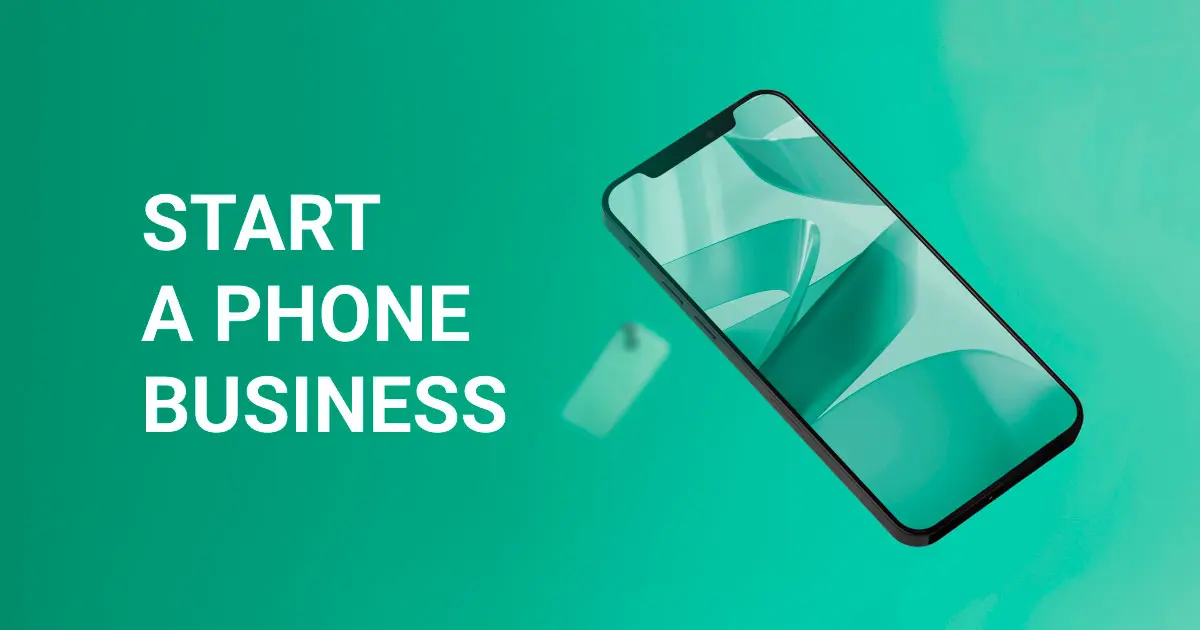According to Persistence Market Research, the global market for second-hand cell phones was estimated at $50.5 billion in 2022 and grew to $55.7 billion in 2023. The compound annual growth rate (CAGR) is also impressive, expected to grow by 11-12% by 2030. These numbers make the used and refurbished smartphone market appealing for starting a business. Today, we will help you create a detailed business plan for your pre-owned mobile phone company.
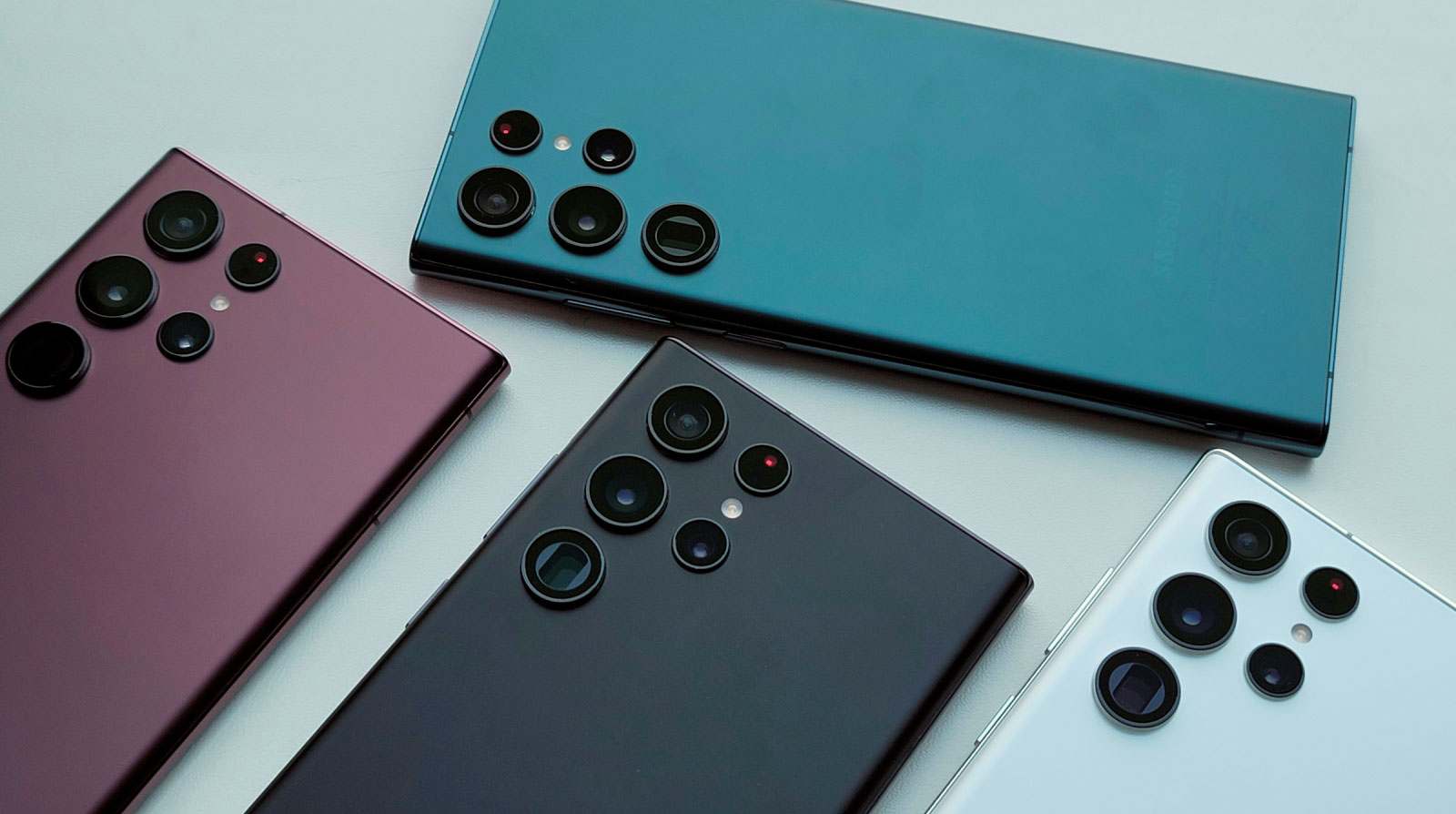
Research Market Conditions and Trends
As the market grows consistently, there are multiple tendencies that develop over time. Researching these trends and considering them while creating the workflow is crucial. Here are some market tendencies to bear in mind:
- The growing popularity of online platforms for used and refurbished smartphones, caused by the overall growth of e-commerce websites, is expected to drive market demand. The online format suits various businesses, including retailers and wholesalers. Moreover, you can offer trade-in services online, attracting more customers to your business.
- Providing certificates showing the quality of the device is becoming more common. These reports help increase the resale value of phones and build trust between you and your customers.
- Sustainability trends influence the second-hand phone market, leading to increased demand for pre-owned devices. People tend to buy used smartphones for environmental reasons, supporting a circular economy. Therefore, it is important to share your sustainability values with your target audience and implement green practices into the workflow.
- Robotic solutions are driving the market. As manual testing and grading proved inconsistent and inefficient, businesses are finding other options to process devices. Now, only robots such as Reeva by NSYS Group can perform complete device testing, grading, pricing, and wiping, entirely eliminating human errors.
- Regional differences cause businesses to differ from country to country. The largest and most competitive market is North America: its market share in 2022 was 25,8%, according to Persistence Market Research. The demand for used phones is mainly growing in Asian markets, such as China, India, and Indonesia.
Create the Business Model
Considering market tendencies, choose the services your business will offer. Answering the following questions can help you to decide:
- In what country or countries will you work?
- Will you resell devices to end users or other businesses?
- Will you work online or offline? Or both ways?
- Will you provide buyback and trade-in services?
- Will you provide repair services?
Depending on your answers, create a business plan, considering all the profit channels you will have. Keep in mind that the more services you offer, the more customers' needs you will cover.
Also, choose a business name that will represent what your company is doing. The name should be relatively rare: check whether similar businesses have the same name. If you have a physical store, you can add the name of your town or region.
Build Your Inventory
First, focus on the most profitable phone models. However, customer demand is evolving; therefore, market analytics should be your constant activity.
Read our digest to ensure you have the best models in your stock. We have collected the top 10 iPhone and Android models there.
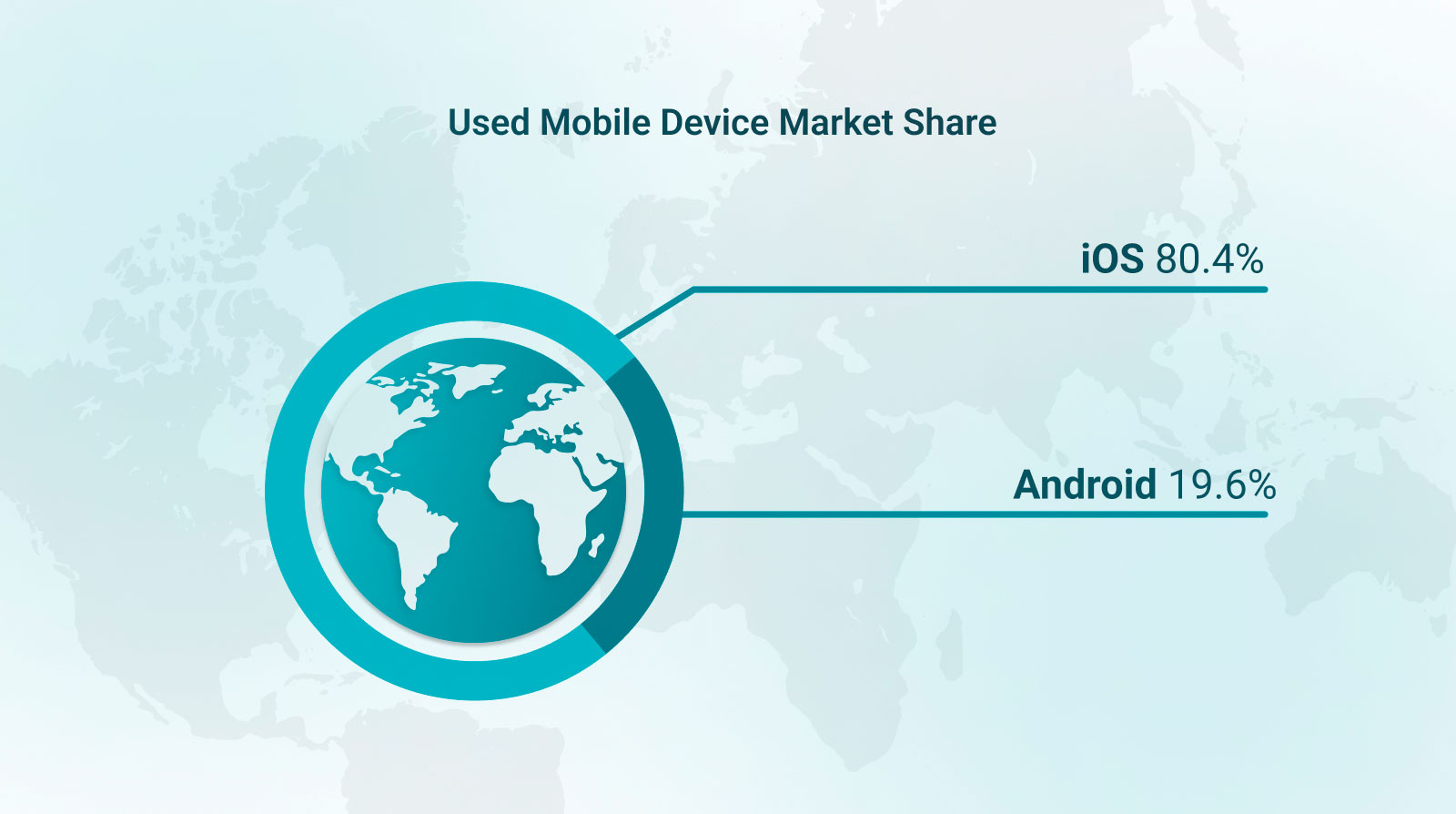
What Phones Should You Not Buy?
Apart from choosing which phones to buy, remember the types of devices that you shouldn't purchase. For example, obsolete and vintage iPhones, blocked phones, or those with financial debt. These devices will be difficult or impossible to resale, which leads to increased business expenses.
To avoid buying such phones, perform IMEI checks with software such as NSYS Diagnostics. This will help you detect the status of the device and its overall functional condition.
Find Suppliers
Finding one supplier might seem appealing at first. Sure, buying all phones from one place is easy to manage. However, it puts you at risk and makes you dependent on the exact company. To win the competition, find several suppliers that will have to keep prices reasonable.
Even if you rely on the supplier, it is essential to check batches of phones by yourself. This will ensure the quality of your stock and prevent other expenses related to device repair.
We have analyzed our clients' statistics to share the data on the most common phone defects. Check the devices thoroughly to ensure they don't have these issues.
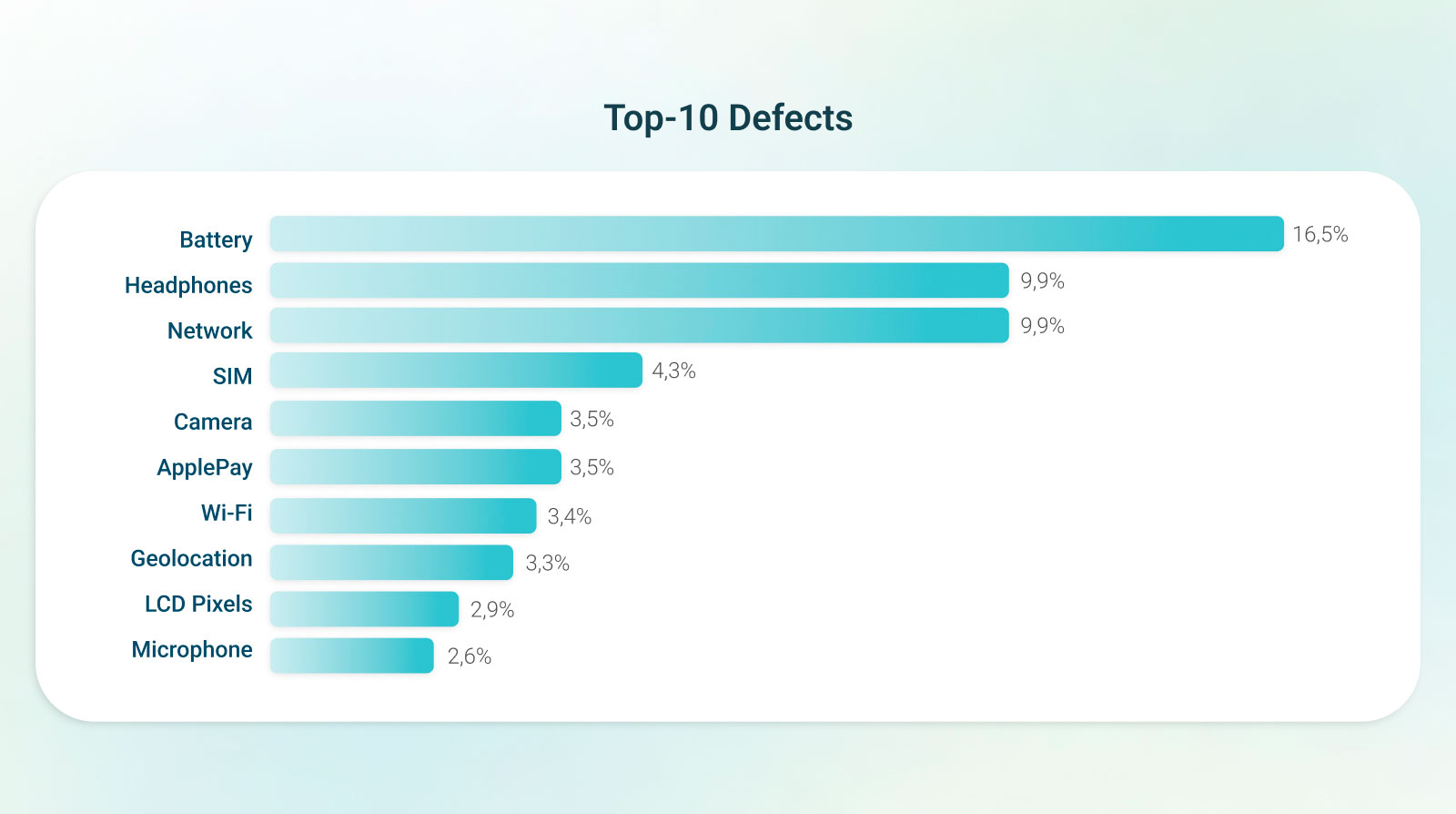
Test Devices
Device diagnostics is crucial for any business that operates with pre-owned phones. Performing tests manually is an outdated approach: it is time-consuming, prone to human errors and fraud, and may seem unreliable to customers. When you start a cell phone business, the best option is to use testing software such as NSYS Diagnostics. Apart from quick, efficient, and transparent testing, the solution provides a certificate for each tested device. You can share the report with your customer to prove the quality of the device.
Enhance the Grading
The next step in evaluating a phone is grading. Since the grading systems may differ from supplier to supplier, there may be some misconceptions about the actual state of phones. If you get a wrong grade, you could overpay for a "Grade B" phone with a broken screen and lose money. If you buy a batch with mismatched grades, you will have to spend money repairing phones and offering a lower selling price to customers.
To avoid such issues, some companies determine grades by visual inspection, while others use checklists and manuals to measure the size and number of scratches.
Instead, use an automated solution to grade phones accurately and quickly. NSYS Autograding eliminates human errors and provides consistent results. You can evaluate cosmetic conditions automatically via an AI-powered tool and all you need to start grading is a mobile phone with the app installed.
Analyze Your Sales Data
Every business has to manage its inventory, whether it's done in spreadsheets or with specialized software. Otherwise, there will be no understanding of how items move around the warehouse, where they are stored, and when and to whom they are sold.
Implementing a warehouse management system will help you create your own business strategy to:
-
Invest your cash profitably.
-
Detect issues in the early steps.
-
Decrease missed sales rate.
-
Reduce theft and losses in your warehouse or store.
With the inventory management system, you can finally track the parameters that are important to your business and improve your decision-making.
Implement Buyback and Trade-In Solutions
While wholesalers have been impacted by declining exchanges from mobile carriers and retailers, trade-in companies that buy directly from customers are maintaining business growth and seizing further market opportunities.
If you decide to start a buyback or trade-in program, we recommend implementing software solutions to protect yourself from endless checklists, online spreadsheets, and staff errors.
For example, NSYS Buyback automates trade-in and buyback services for a cell phone business. The solution helps to increase profit from BB/TI deals, eliminate unnecessary costs, and grow customer loyalty. It has numerous functions to straightforward the process:
- Customizable tests for accurately identifying the value of the device.
- Estimation of preliminary and final trade-in values based on market prices.
- Built-in simple device diagnostics process.
- Integration of any existing list of devices.
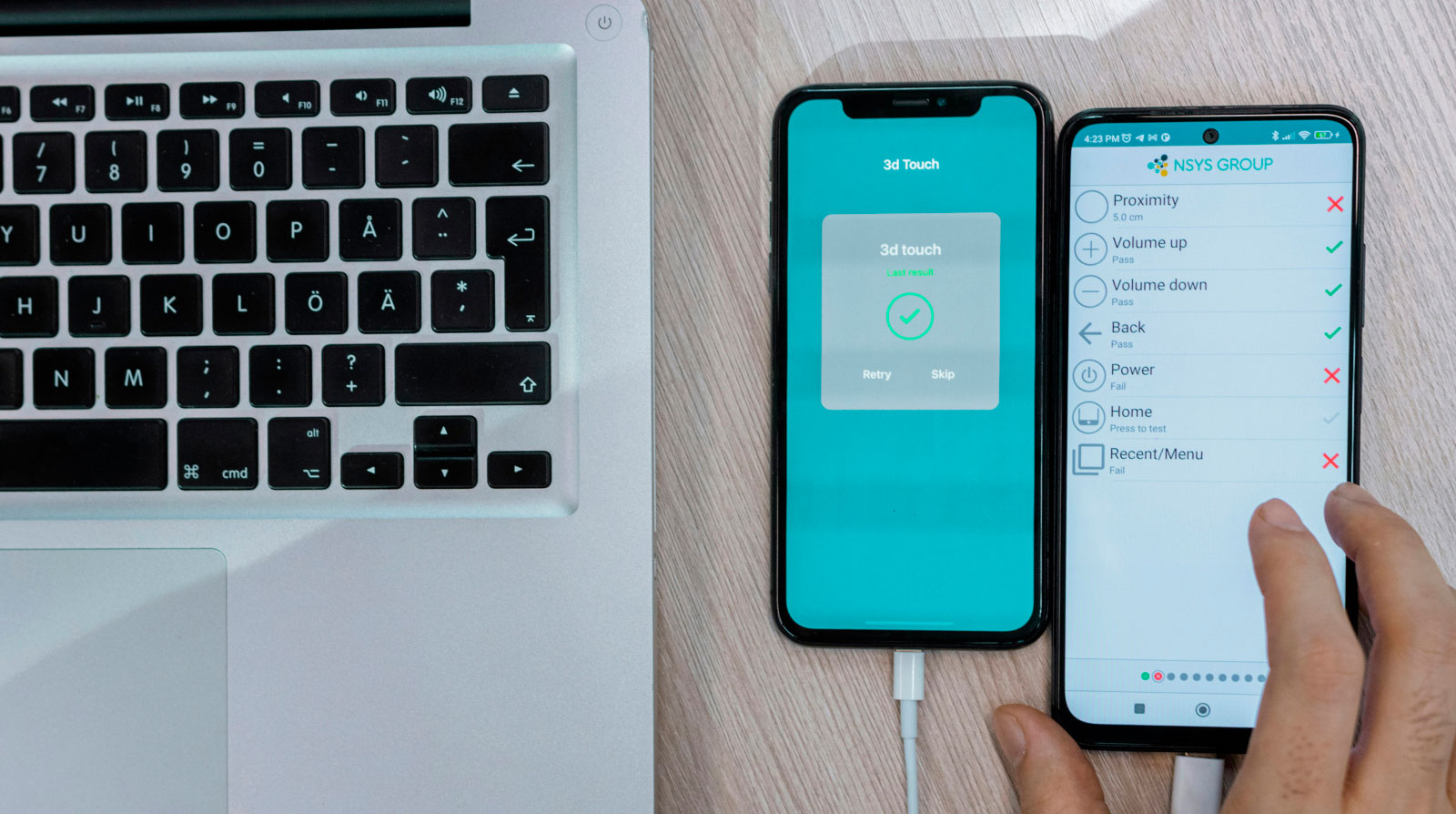
One More Piece of Advice
As you can see from the tips mentioned above, running a used cell phone business is a complex process that includes multiple steps and requires thoughtful preparation. Instead of choosing various programs for testing, pricing, etc., implement an ecosystem of software solutions. This will ensure simple scalability and interconnectivity of services.
NSYS All-in-One is a perfect ecosystem for your used device business! It will help you automate your workflow and boost your decision-making with advanced analytics.
Click the link below to try NSYS All-in-One!


